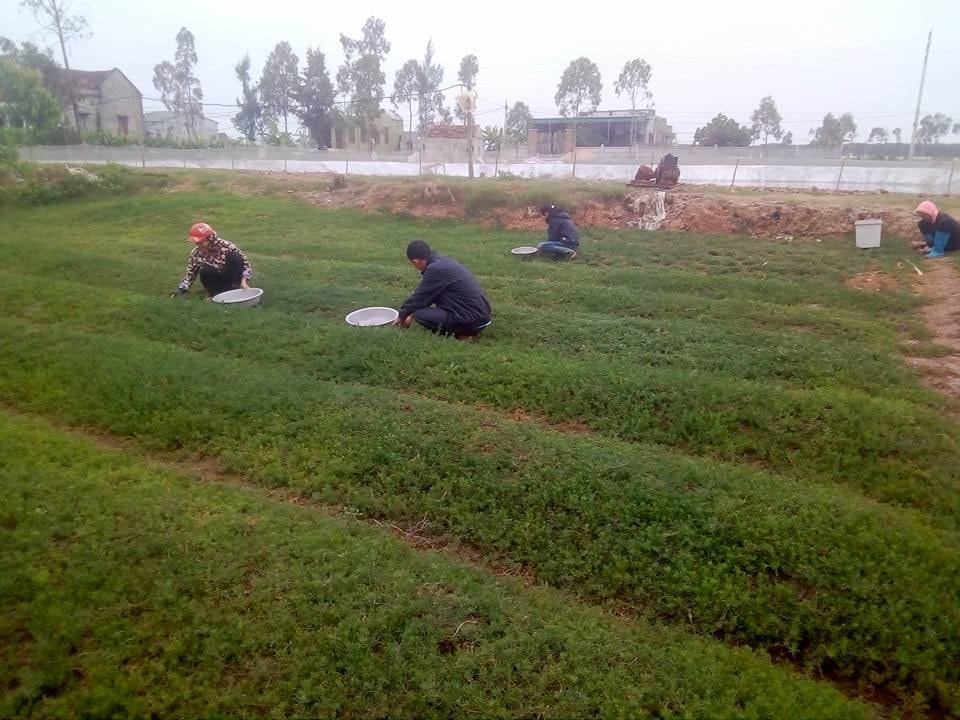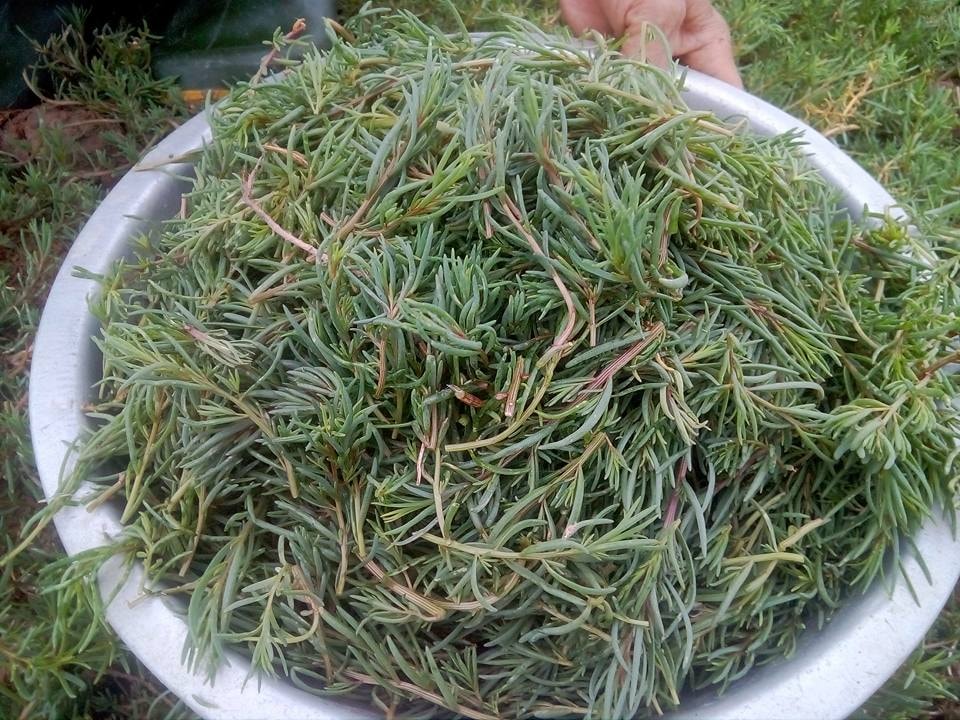Nghe An sea mulberry specialty
(Baonghean.vn) - Ms. Le Thi Phu in Hamlet 12, Quynh Thanh Commune, Quynh Luu District has boldly brought the jujube plant to grow in her home garden. Now, after 1 year of care, the vegetable garden is ready to harvest, bringing in millions of dong every day for her family.
Rau lot is a wild vegetable that grows scattered on salty fields, along brackish marshes and shrimp ponds in coastal communes of Quynh Luu. Rau lot grows and develops entirely in the natural environment, so this is a vegetable with a very special taste, good for health and is considered a clean vegetable.
When spring comes, the water mimosa grows well, women in coastal areas often take advantage of the opportunity to pick the vegetables to prepare dishes for their families, and if they pick a lot, they sell them at the country markets. Because it is a clean vegetable, rich in nutrients, many people seek to buy it. Recently, water mimosa has been selling for a good price, even "selling out". Therefore, from being a picker, Ms. Phu boldly brought the wild vegetable to grow in her garden.
 |
| The jujube garden of Ms. Le Thi Phu's family in hamlet 12, Quynh Thanh commune (Quynh Luu). Photo: Nhu Thuy |
According to Ms. Le Thi Phu, due to the fact that her garden was contaminated with salt water from shrimp ponds, for many years she did not grow any vegetables, just sowing seeds that rotted because of the salty soil. In March 2017, after a day of picking jute leaves to sell, she thought that jute leaves could survive in salt water, so why not bring them back to try planting on her own land. Thinking and doing, she dug up the vegetable roots and planted them in an 8 meter wide garden. After 2 months, the vegetables took root and grew well.
Up to now, after nearly 1 year of experimenting, the jute garden has covered the vacant land and grown well. Currently, the jute garden is in the growing and harvesting season. While other households have to wake up early to go to the salt fields and shrimp ponds to pick vegetables to sell for extra income, Ms. Phu's family only needs to pick within 1 hour to harvest 40 - 50 kg of fresh jute; her family harvests the vegetables once every 2 days.
 |
| The young and fresh water spinach grown in home gardens is better than that grown in salt fields; the current market price is 20,000 VND/kg. Photo: Nhu Thuy |
Currently, with a purchase price of 20,000 VND/kg at the garden, Ms. Phu earns around 1 million VND per day. Traders order as soon as vegetables are harvested, so there is no worry about unsold goods. In particular, the jujube vegetable can be harvested all year round if provided with enough water, and will not dry out or turn yellow like when grown in the wild.
"An important thing when growing water mimosa is to plant it on loam or sandy soil contaminated with brackish water. Once the vegetable has taken root, just watering with salt water is enough. When growing water mimosa, you do not need to add phosphate fertilizer or chemicals, otherwise the vegetable will be shocked by the salt and die" - Ms. Phu added.
Ms. Nguyen Thi Hien - a trader purchasing jute in Quynh Luong commune said: Currently, the demand for jute as food in restaurants and hotels is increasing, so supply cannot meet demand. We buy as soon as the vegetables are harvested, but there is still not enough to import to Hanoi and Vinh city. Previously, the price of jute only fluctuated from 5,000 - 8,000 VND/kg, but in the past 3 years, the price of jute has increased sharply from 20,000 - 30,000 VND/kg.
From a rustic dish of salt workers in coastal Quynh Luu district, rau lot has now become a specialty known by many people and sought after to prepare dishes for their families and as gifts for relatives. It is thought that from Ms. Phu's rau lot growing model, coastal households can refer to domesticated vegetable varieties grown in their home gardens to serve market demand as well as increase income./.
